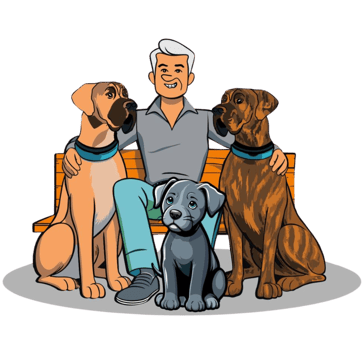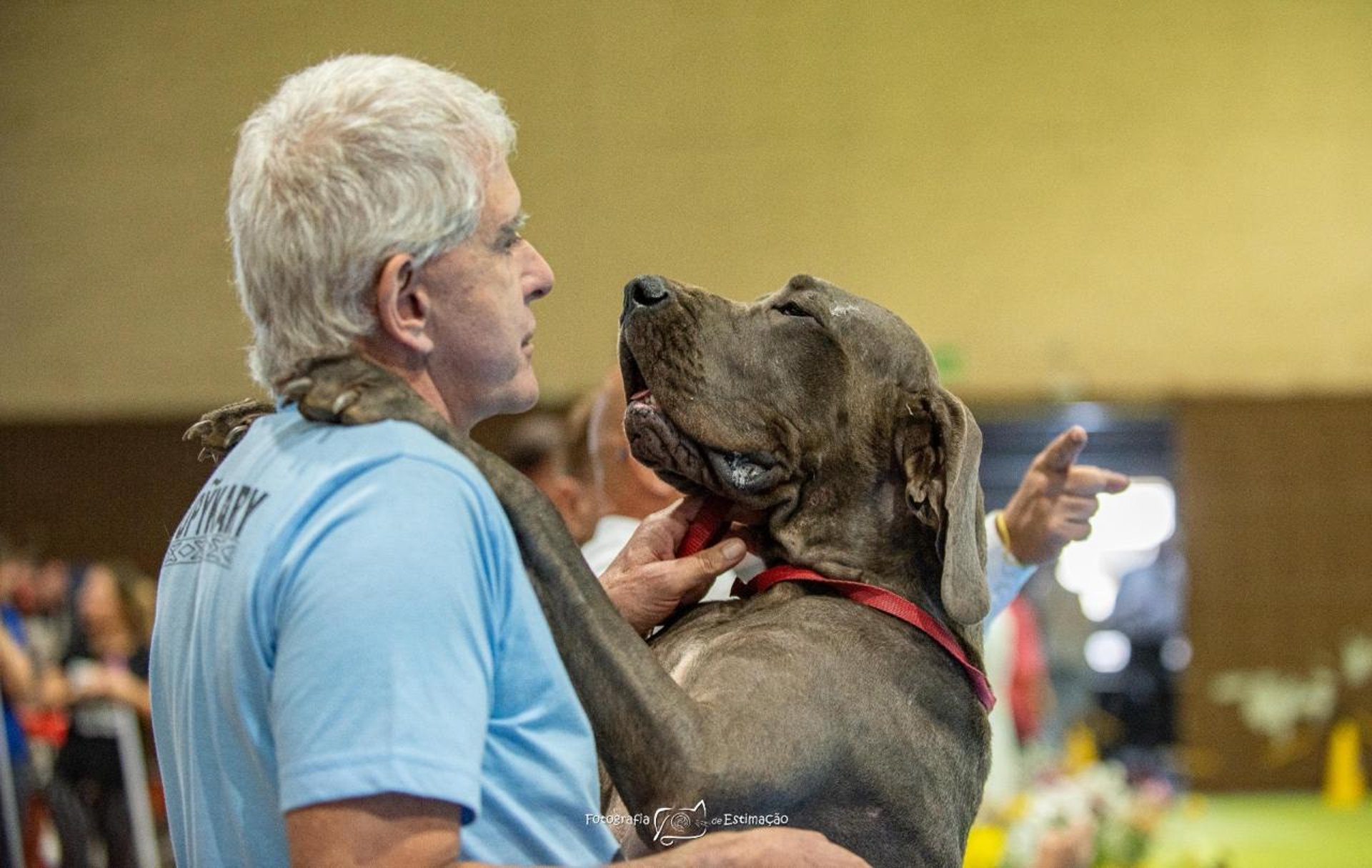
WHO ARE THESE APOLLOS?
The Great Dane, Great Dane, Deutsche Doggen, Great Dane, Alano, Grandanés, Grand Danios, as it is called here and around the world, is: Beautiful, big, slender and strong. Garboso. Pay attention. Docile and playful. But they also defend the territory. Just bark, that size. You've seen people climbing trees out of fear. A friend wisely concluded the perfection of Nature: “can you imagine if a dog that size was brave?”
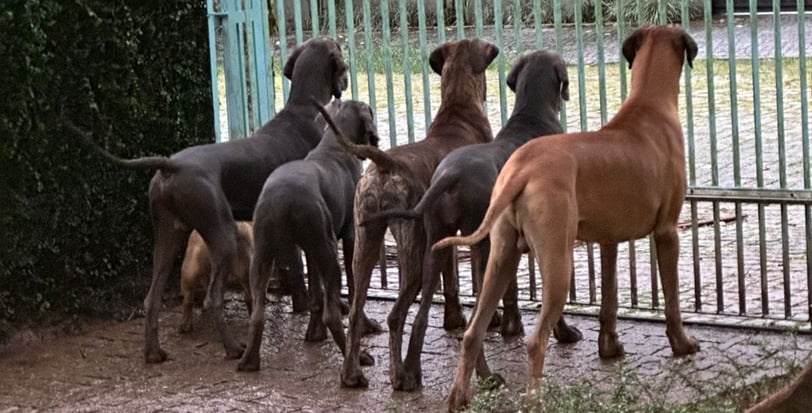

Inseparable, like shadow, even when you get angry. Like all dogs, they love getting in the car and going for a walk (they travel like saints for hours upon hours while sleeping), coming into the house, climbing on sofas and beds. They love to position themselves under large leaves or, preferably, curtains and tablecloths, to caress your back!
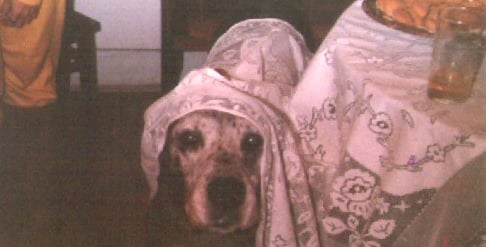

They are not very aquatic (with exceptions).
Sleepyheads, they are capable of sleeping all the time, if not stimulated, especially older people and on rainy days.
They are precocious, both in growth and aging. A 3-month-old baby already has a paw the size of the palm of your hand. The paws and ears grow first, then the rest goes like yeast. Given their size and weight, they also age earlier than most breeds. After the age of three, white hair begins to proliferate on the face (cheeks and above the eyes, first).
A lot of care and genetic development has been taken by responsible breeders to try to extend their life expectancy, as it is normal for them to start at eight, nine or ten years old, on average. They rarely reach the age of twelve or thirteen.
These precautions, with regard to genetics (crossbreeding), diet, health, lifestyle, will be discussed in more detail in lives on YouTube or in texts on social networks, here we will always inform you. They deserve countless chapters, which we understand do not fit on this website. And, always at your service, for any contact and personal clarification: deciomennabarreto@gmail.com
For the purpose of exhibitions and granting of pedigrees, they are divided into three modalities:
1) Blacks and harlequins;
2) Gold and brindle;
3) Blues.
Thus, in exhibitions, each discipline competes independently of each other, to choose the best of the breed (there will always, therefore, be three best, who do not compete with each other).
And for the granting of pedigrees by CBKC, one modality cannot be mixed with the other. Therefore, harlequins cannot breed with golden/brindle ones, nor with blue ones, and vice versa. Nor gold/brindle with blue.
The only exception is black (although classified among the harlequins), a “wild card” among all, as long as they are descendants, preferably, of their respective modalities. It is possible, therefore, that blacks also come in litters of gold/brindle, and blue, and they can continue crossing with non-blacks, within each of these modalities.
As an example, our golden one, Doo, has a black father and mother, but a golden grandfather. In his litter, he was one of three golden ones, as well as eight other black ones!
The description of each of these modalities, as well as the breed in general, with the respective color marking requirements, can be obtained on the CBKC website
https://cbkc.org/application/views/docs/padroes/padrao-raca_255.pdf
The most widespread harlequins, which have greater diversity (in addition to black, also plated, manted, merles), can be briefly understood in the drawing below, where harlequins are the last 4


And as for these, a curiosity, the word “harlequin” comes from the Italian, since the Middle Ages, from the Arlechino character, from the Venetian carnival, with white clothes and a black mask around the eyes!
And as for the “blue ones”, obviously there are no dogs of that color. It is a lead gray, or petroleum, that resembles a bluish color. Especially when younger, when the hair is lighter (of all types). Take the example of our Astrinha, when she arrived here at home when she was less than two months old:
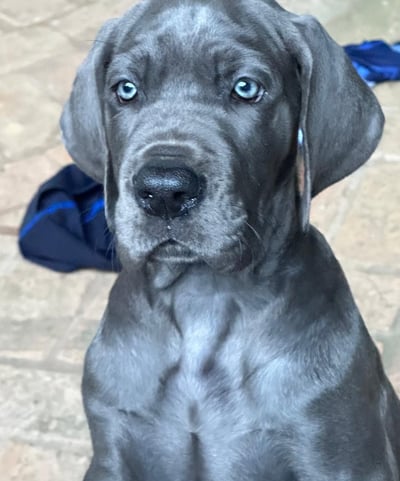

Finally, its history goes back around three thousand years, like most dog breeds. Its current version, as we know it today, was stipulated in Germany at the end of the 19th century, after many crossovers over the centuries.
For those who want to delve deeper, we refer you to the excellent study carried out by Spanish breeders, from Tenerife, on their website, https://www.dogoalemankennel.com/tienda
Also, in a more summarized way, on the website of our dear creator Emma, https://gggkennel.com/sobre-a-raca
A tight hug from the Jetsons' blue dane, Astro
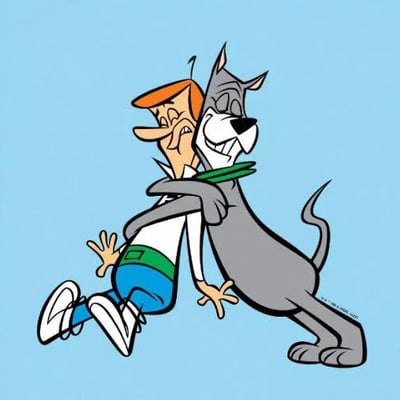





Koona, photo more than 40 years ago
(47) 99965-4225
© 2024. All rights reserved to Decio Menna
Designed by
Contacts
Leave a message






